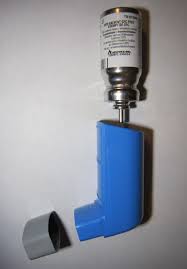
Researchers from a University in Utah have developed a model that can anticipate the deterioration of asthma in children. Asthma is a chronic inflammatory disease where the airways narrow and become swollen due to mucus accumulation in the lungs. Patients experience difficulty in breathing, coughing, frequent respiratory infections and tightness of the chest. It is believed that asthma is caused by a combination of genetic and environmental factors such as pollution, dust and smoking. There is no cure for asthma, for those with mild cases it can be handled by avoiding triggers such as pollution and certain foods but for those with more severe cases medications are needed to try and treat the symptoms however many patients suffer more frequent exacerbations and asthma attacks. Oxygen therapy and more severe medications are also sometimes needed for those that suffer from it badly.
Millions of people suffer from asthma and children are affected more than adults. Asthma attacks can be terrifying for both the child and their parents and it is difficult for a child to communicate their health status. Sometimes the parent has no idea the child is unwell until they cant breath and are in the middle of an asthma attack. This also results in huge cost to the NHS with children being admitted to hospital after visiting the A and E department for an attack. It would be helpful if the child or parents could anticipate that an attack may occur so that they can be prepared and maybe put into action a plan to prevent an exacerbation or reduce the frequency or severity of them.
The researchers have developed a machine learning model that is able to predict signs of asthma deterioration in children one week prior to an exacerbation. The Asthma Symptom Tracker is a self-monitoring tool that has been trialed on children with asthma over a 2 year period. The data has been collected and allowances made for temperature, humidity, tree pollen count etc and the results suggested that the mode; was 71% accurate, 74% sensitive and 71% specific in predicting an exacerbation a week later.
This model can now be integrated into an electronic device, which can be worn by the user. The device can take constant readings and warn the user of a potential case of deterioration in their health. The overall success rate is around 75% so would be extremely useful in helping those that suffer from asthma, as hopefully in the future a model can be developed for adults too. This could reduce exacerbations, improve the well-being of the patients and decrease the burden on the health care system.
References: http://lungdiseasenews.com




